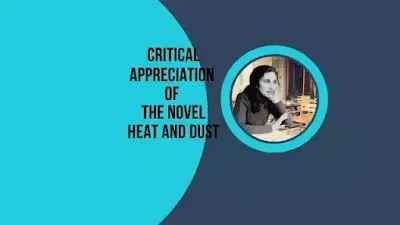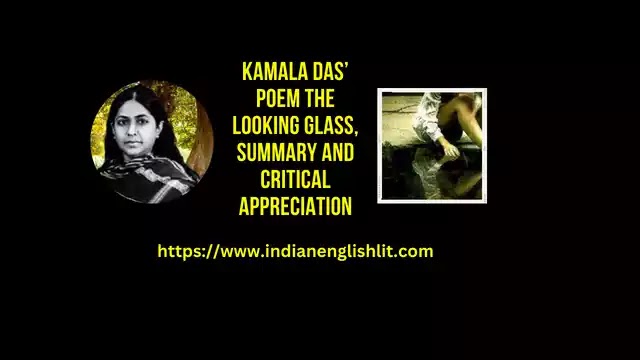Introduction:
‘Heat and Dust’ is certainly a criticism of Indian society showing the people some contemporary social problems from which people might become free. Iyengar writes that the writer had made a deep study of the Indian society. “But there is no malice or even deliberate distortion in the portraiture, and there is touch of compassion that humanizes even the most ironic situations or the most satiric portraits.” It is necessary to mention that her efforts did not make any effect on the people or the Government of India because nothing was done to improve their condition.
As the title of, ‘Heat and Dust’ shows that India is a desert both materially and morally, she mentions that the people suffers from the social evils of poverty, illiteracy, superstitions, etc. For example, she was much surprised that ambulance could not be sent to bring a poor woman to the hospital as she was taken to a tantric in place of a doctor. The poor eat unhealthy food from cheap places. Marriages are performed without the consent of the bride and bridegroom. She also loved many things of India saying that, “There are many ways of loving India, many things to love her for the scenery, the history, the poetry, the music and indeed the physical beauty of the men and women.”
Plot Construction:
The plot construction of the present novel clearly shows Ruth Prawer Jhabwala as a perfect artist. She had completed the novel according to her plan. Tessie and Beth refused to speak about the family skeleton - Olivia affair. Their children and grandchildren became curious to know about the reality. The narrator knew something about Olivia from the two old widows. When Harry visited them with Olivia's letters written to her sister, Marcia, she got enough information to open out the mystery of Olivia. She set out for India to see those places where Olivia had lived. Then, the novel changed into the history of Olivia and India as it was in 1923 along with the narrators own information. In India, she found the people naked and hungry. She found some changes in that house in which Olivia lived with her husband Douglas. The Palace of the Nawab was in the neglected condition.
Generation Gap:
The generation gap took place after the passage of time. Karim and Kitty, the inheritors of the Nawab did not live in that palace because they had shifted to London after selling many of their precious things. Karim said that the Nawab was responsible for the loss of the family jewellery. “He had always needed money and hadn't cared how he laid his hands on it. He had led a riotous life there but had been all sorts of scandals even (perhaps I had heard) with an English woman in India, the wife of an I.C.S. Officer.” About Amanullah he said, “He got very quarrelsome while drinking and once, when one of his drinking companions contradicted something he'd said, he got so angry that he took his sword and cult off the poor guy's arm.” He was surprised that the people still admired him.
Though Tessie and Beth did not like to talk about Olivia yet it was a subject of interest for the granddaughter. If it was a taboo for the old women, yet it was a topic of special interest for the narrator because the values and the beliefs had changed due to the generation gap. The narrator found that her grandfather Douglas was at fault, not her grandmother, Olivia's Douglas had shut her to a lonely cell, so she found company which the Nawab as her best choice. The Nawab's wife had left him and so Olivia had been neglected by her husband if not deserted her.
Olivia had never desired to conceive from the Nawab but it was her moment of weakness that she had become pregnant. Olivia had to abort the foetus and she left the society of the compatriots because then she had no place in that society. The narrator went into the mountains where she could give birth to a child in better atmosphere.
Her novels mostly with female characters:
After reading the present novel ‘Heat and Dust’ and her other novels we find that they show mostly female characters. In many of her novels women are the centre of action. ‘Heat and Dust’ is the history of a women Olivia and the historian and the narrator is also a young woman. She had a strong desire to know about the forbidden subject. She had met a woman in Bombay who had given her much information about the poor condition of Indian society. After that she met Maji who was a very good person. The writer wrote that, “It was she who had sympathy for the dying beggar woman. She took the beggar women's head into her lap, stroked it with her pleasant hands and looked at the dying face. The beggar woman had a smile on her toothless face after all there was somebody who had sympathy with her. The woman who was to die neglected and heart - broken died peacefully.”
Maji had saved the narrator from the professional midwives, so she respected her much. When she entered the hut of Maji she found her sitting in a state of Samadhi in a conscious and happy condition. It is true that, “She seemed larger than life and made me think of some mythological figure: One of those potent Indian goddesses who hold life and death in one hand and play them like a yo-yo. When the narrator took leave of her, Maji showed motherly affection for her.”
The writer had a good opinion about Olivia but none for Douglas. The wife and mother of Inderlal were uneducated, so they used to behave in a ridiculous manner but she did not regard them bad. In this way, the novelist has glorified womanhood.
The Element of Humour:
Though the subject - matter of the novel is serious, yet the novelist did not lose her sense of humour. That first woman whom the narrator had met behaved in a ridiculous manner. That woman told her that she had been living in India for 30 years and “If God wants her to die here, that is what she will do.” After that she went to meet Inderlal's wife and mother. The mother examined her closely as if she was a proper girl to be married to her son.
The narrator wanted an Indian dress for herself, so a roadside tailor took her measurements on the road without touching her body. The result was that the dress was prepared baggy. It shows an element of humour. She laughed loudly when Inderlal told her that his wife, as his mother said beautiful. It is clear from these words, “His mother had told him she was pretty, but he never could make up his mind about that sometimes he thought yes, sometimes no.” She used the element of humour to reduce the serious element about the evils of the Indian society. She added that the readers should do something to remove such evils.







